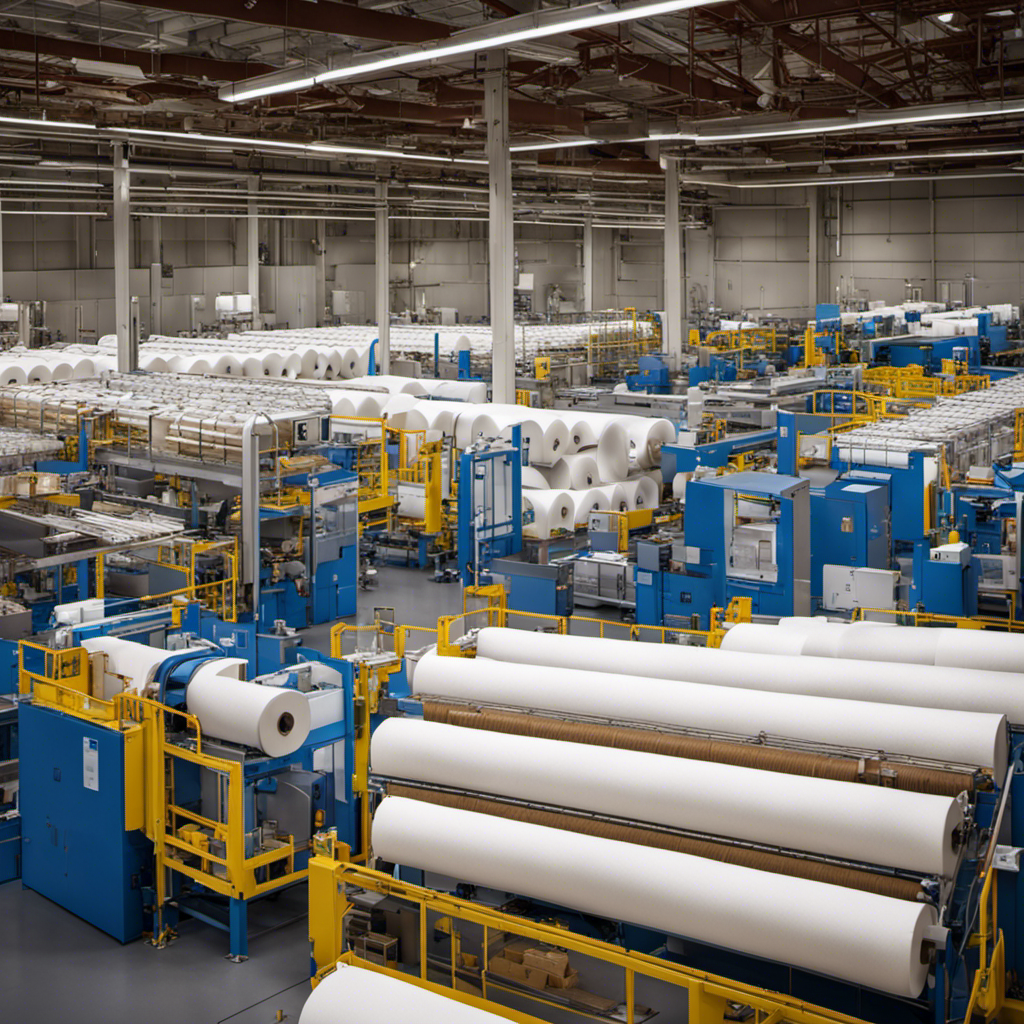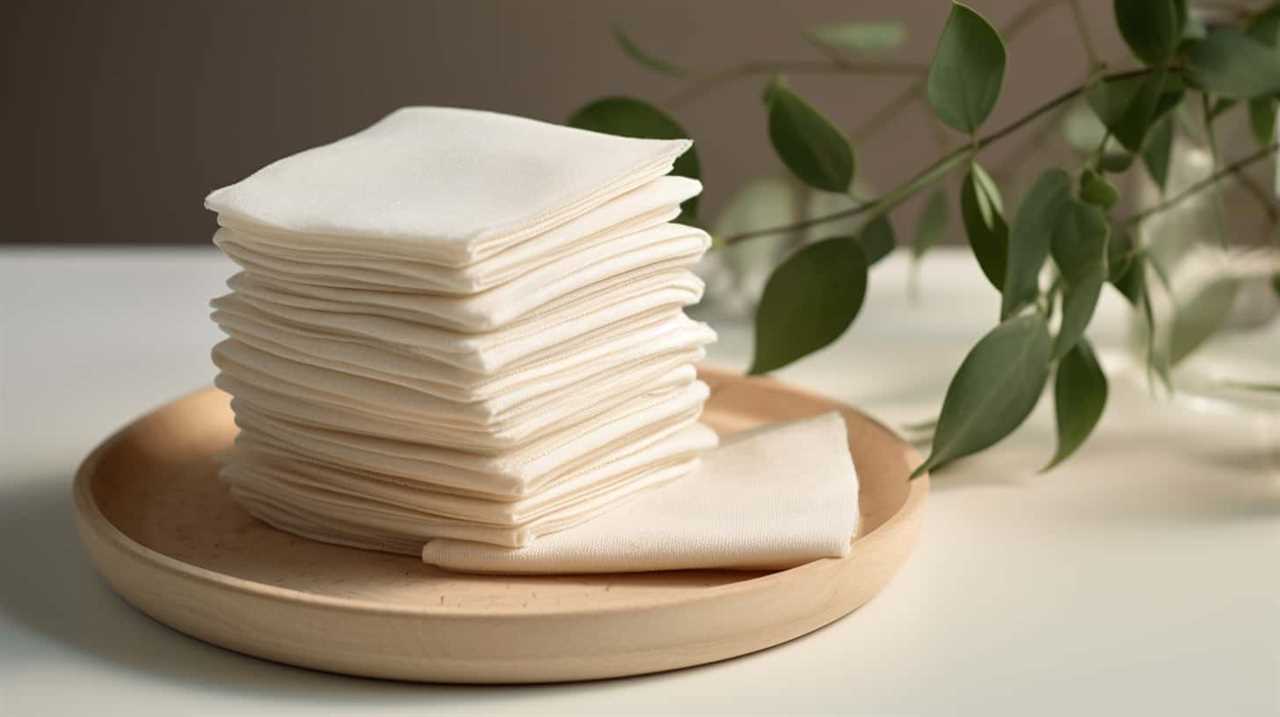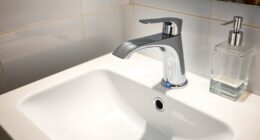Hey there! Ever wondered why your toilet decides to act up and get clogged at the most inconvenient times? Well, I’ve got all the answers you need.
In this article, I’m going to dive deep into the common causes of toilet clogs, from the impact of flushing non-flushable items to the effects of low water pressure on toilet performance.
So, let’s roll up our sleeves and get to the bottom of why toilets misbehave. Trust me, you won’t want to miss this!
Key Takeaways
- Excessive toilet paper usage can lead to clogs, so it’s important to use an appropriate amount.
- Using eco-friendly alternatives such as bamboo toilet paper can help reduce environmental impact.
- Flushing non-flushable items can cause serious blockages, so it’s essential to only flush toilet paper and human waste.
- Regular plumbing maintenance and proper installation are crucial for preventing clogs and maintaining a healthy plumbing system.
Common Causes of Toilet Clogs
One of the most common causes of toilet clogs is when too much toilet paper is used. Understanding sewage systems and proper plumbing maintenance can help prevent this issue.
When excessive toilet paper is flushed, it can accumulate in the pipes and cause blockages. To avoid this, it is important to use toilet paper in moderation and in small amounts. Additionally, it is recommended to flush the toilet multiple times if necessary, rather than flushing a large amount of toilet paper all at once.
Regular maintenance of the plumbing system, such as inspecting and cleaning the pipes, can also help prevent clogs. By being mindful of the amount of toilet paper used and practicing good plumbing maintenance, clogs can be minimized or even avoided altogether.
Understanding the Role of Toilet Paper
Excessive toilet paper usage and improper disposal can lead to a range of issues in your plumbing system. When too much toilet paper is used, it can create clogs and blockages in the pipes, causing backups and potential damage.
Proper toilet paper disposal is crucial to prevent these problems, as flushing large amounts of toilet paper down the toilet can overwhelm the system and lead to costly repairs.
Excessive Toilet Paper Usage
Using too much toilet paper can lead to a clogged toilet. Excessive usage of toilet paper can cause problems, so it’s important to be mindful of the amount we use. Fortunately, there are alternatives to traditional toilet paper that can help reduce our environmental impact. Bidets, which use water to clean, can significantly decrease the amount of toilet paper needed. Reusable cloth wipes or bamboo toilet paper are also eco-friendly options that can reduce waste. By opting for these alternatives and being conscious of our toilet paper usage, we can minimize the risk of clogged toilets and contribute to a more sustainable future.
Proper toilet paper disposal is also essential to prevent clogs and maintain a healthy plumbing system.
Proper Toilet Paper Disposal
When disposing of toilet paper, make sure to properly place it in the designated trash bin. This helps prevent clogs and keeps the plumbing system functioning smoothly. However, if you’re looking for alternatives to traditional toilet paper, there are eco-friendly options available. These alternatives are not only better for the environment but can also be gentler on your skin. Some popular eco-friendly toilet paper options include bamboo toilet paper, recycled toilet paper, and tree-free toilet paper made from materials like sugarcane or wheat straw. These alternatives are biodegradable, sustainable, and often come in packaging that is recyclable or made from recycled materials. Making the switch to eco-friendly toilet paper can be a small but impactful step towards reducing your environmental footprint.
| Toilet Paper Alternatives | Benefits | Materials Used |
|---|---|---|
| Bamboo Toilet Paper | Sustainable, biodegradable | Bamboo fibers |
| Recycled Toilet Paper | Reduces waste, eco-friendly | Post-consumer recycled paper |
| Tree-Free Toilet Paper | Sustainable, biodegradable | Sugarcane or wheat straw |
The Impact of Flushing Non-Flushable Items
Clogging risks and consequences are important considerations when it comes to proper waste disposal. Flushing non-flushable items can lead to serious blockages in the plumbing system, causing backups and potential damage to pipes.
It is crucial to understand the implications of improper waste disposal and take necessary precautions to prevent clogs and maintain the functionality of our plumbing systems.
Clogging Risks and Consequences
One of the risks of clogging a toilet is the potential for water damage. When a toilet becomes clogged, water can overflow onto the floor, causing damage to the surrounding area. This can lead to costly repairs and inconvenience. To prevent clogged drains and avoid these risks, it is important to practice regular plumbing maintenance. This includes avoiding flushing non-flushable items such as wipes, feminine hygiene products, and paper towels. It is also essential to ensure that the toilet is properly maintained, including checking the water level and ensuring the flush mechanism is working correctly. Regular plumbing maintenance can help to identify and address any potential issues before they become major problems. By taking these preventative measures, you can minimize the risk of clogging and protect your home from water damage.
| Clogged Drain Prevention | Importance of Regular Plumbing Maintenance |
|---|---|
| Avoid flushing non-flushable items | Identify and address potential issues before they become major problems |
| Proper toilet maintenance | Minimize the risk of clogging and protect your home from water damage |
| Regular plumbing check-ups | Ensure the toilet is working correctly and prevent costly repairs |
Proper Waste Disposal
Proper waste disposal is essential for preventing clogs and avoiding potential water damage in your home. Understanding waste management and its environmental impact is crucial for maintaining a healthy and functional plumbing system.
When it comes to toilets, only flush toilet paper and human waste. Flushing anything else, such as wipes, feminine hygiene products, or paper towels, can lead to clogs and blockages in the pipes. These items do not break down easily and can cause backups and flooding.
It is also important to avoid pouring grease or oil down the drain as they can solidify and create blockages.
How Mineral Buildup Affects Toilet Function
If you don’t regularly clean your toilet, mineral buildup can start affecting its function. Mineral buildup occurs when hard water, which contains minerals like calcium and magnesium, is flushed through the toilet. Over time, these minerals can accumulate on the inner surfaces of the toilet, including the rim, bowl, and jets.
This buildup can restrict the flow of water, leading to reduced flushing power and increased clogging. To prevent mineral buildup and maintain your toilet’s function, regular maintenance is essential.
This includes cleaning the toilet with a mild cleaner or vinegar to remove any existing mineral deposits. Additionally, DIY unclogging techniques like using a plunger or a toilet auger can help dislodge any mineral buildup that may be causing a clog.
The Role of Poor Plumbing Installation
The role of poor plumbing installation can greatly impact the overall function of a toilet. When it comes to plumbing maintenance, proper installation is crucial.
If the pipes are not properly aligned or connected, it can lead to leaks, blockages, and even toilet clogs. A professional installation ensures that the toilet is correctly fitted and secured to the floor, preventing any movement or shifting that could disrupt the flow of water.
Additionally, a professional plumber will ensure that the pipes are properly sized and positioned to allow for efficient drainage, reducing the likelihood of clogs. Regular plumbing maintenance, such as checking for leaks and clearing any blockages, is also important to prevent toilet clogs.
The Effects of Low Water Pressure on Toilet Performance
You may notice that your toilet isn’t flushing properly or takes longer to refill, which could be caused by low water pressure. Low water pressure can significantly impact the performance of your toilet, leading to inefficient flushing and slow refilling. Troubleshooting the water pressure issue is essential to optimize your toilet’s performance. Here is a table illustrating the effects of low water pressure on toilet performance:
| Effects of Low Water Pressure |
|---|
| Weak flush |
| Incomplete bowl clearing |
| Slow tank refill |
To resolve these issues, you can check for clogged pipes, inspect the water supply valve, and ensure the water pressure regulator is functioning correctly. By troubleshooting and resolving any water pressure-related problems, you can improve your toilet’s performance and avoid the inconvenience of clogs. In the next section, we will discuss preventive measures to avoid toilet clogs.
Preventive Measures to Avoid Toilet Clogs
One way to prevent toilet clogs is by regularly maintaining your plumbing system. Toilet maintenance is crucial in ensuring the proper functioning of your toilet and avoiding unpleasant clogs.
One important aspect of maintenance is scheduling regular plumbing inspections. These inspections help identify any potential issues or blockages in your plumbing system before they become major problems. A professional plumber will thoroughly inspect your toilet, pipes, and drains, checking for any signs of damage or blockages. They will also ensure that the toilet components are working correctly, such as the flapper, fill valve, and flush handle.
Regular plumbing inspections can help you catch any potential issues early on and take the necessary steps to prevent toilet clogs and keep your plumbing system in excellent condition.
Conclusion
So there you have it, folks. Toilet clogs, while an unpleasant inconvenience, are a result of various factors. Understanding these causes can help us take preventive measures to avoid such mishaps in the future.
By being mindful of the amount of toilet paper we use, avoiding flushing non-flushable items, and ensuring proper plumbing installation, we can maintain the smooth functioning of our toilets.
Remember, a little effort goes a long way in preventing these ‘unfortunate blockages’ and keeping our bathrooms a haven of cleanliness and comfort.










